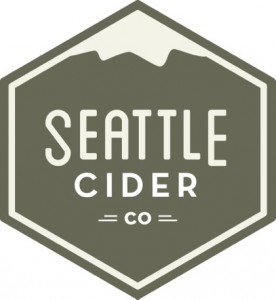
Having just invested close to half a million dollars — financed by a mix of SBA loans, money raised on Bolstr, and cash flow — in an expansion that enabled it to triple capacity, Seattle Cider is getting set to open a second facility that will again significantly lift its production ceiling.
The cider brand, which only launched last August, expects to move into the new space this November, according to VandenBrink.
The new space will be needed, he said, as the company’s sales exceeded in its first 11 months its five-year goal.
Seattle Cider, which is currently sharing space with Two Beers Brewery, sold through 83,000 cases in its first year and VandenBrink hopes to more than double that figure in year two.
“Turns out, there’s a lot less competition in cider [than in beer], and there’s just as much a need for it,” he said.
Additionally, the company has plans to launch new points of distribution in California, on the east coast, and throughout the Midwest in early 2015. More recently, the company doubled its distribution footprint with launches in Chicago, Ill., Vancouver, B.C., and Japan.
Growth has been a bit slower on the beer side, however, as Two Beers hopes to sell approximately 7,000 barrels this year, up from 5,200 in 2013.
The distribution strategies for each company stand in stark contrast to one another as well. While VandenBrink plans to go wide with Seattle Cider, with Two Beers, he’s more focused on becoming better established at home.
“Because there are microbreweries popping up every square mile in the country, sometimes it seems, we’re really starting to dig deep into the Washington market,” he said. “[We’re] focusing on being the go-to beer in our market instead of trying to go to five, six, eight, 12 other states. Every state has enough local beer.”
Currently, Two Beers’ products are sold in its home state of Washington, Oregon, Alaska, Michigan, Wisconsin, British Columbia, and Japan. And for the foreseeable future, that footprint, which hasn’t changed for a year and a half now, is set in stone.

To start, VandenBrink’s knowledge of how beer is regulated wasn’t of much help when he decided to get into the cider business last year.
“There are all these different regulations,” said VandenBrink. “Keeping track of those and making sure I follow them — beer is beer and cider is regulated as a wine. There is no category yet to regulate cider as cider. Just because I can do one thing with my beer, doesn’t mean I can do that with my cider.”
But chief among the challenges is upholding a certain standard of quality on both sides, despite his attention being split.
“I’ve now doubled my manufacturing,” said VandenBrink. “So I’m now manufacturing two separate products that I need to make sure maintain the quality I expect.”
To do that, both Two Beers and Seattle Cider have brought on operations managers “to keep things moving smoothly,” and more hires, on both sides, are on the way.
There is, of course, one more challenge in running both a cidery and a brewery as both the beer and cider category continue to gain in popularity: “Not going crazy,” said VandenBrink.
